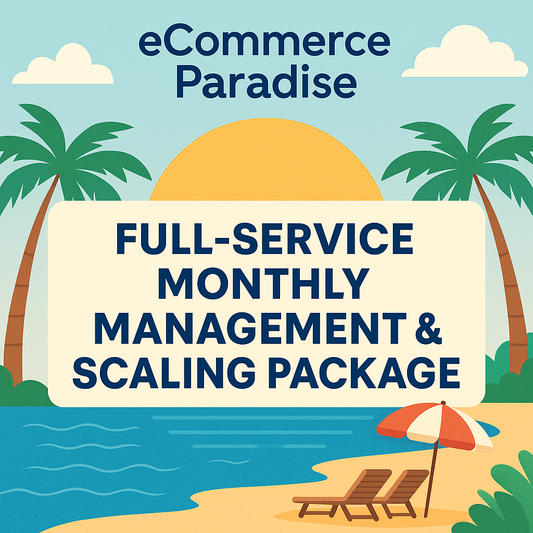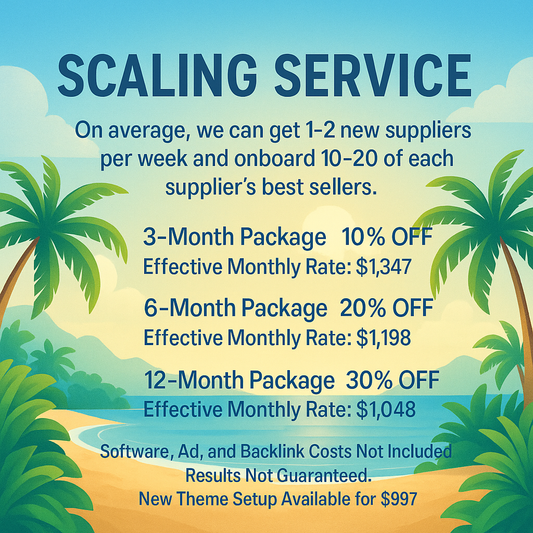
The Impact of Page Speed on Ecommerce SEO
Hey there, fellow eCommerce enthusiasts! Trevor Fenner here from Ecommerce Paradise, and today we're diving into a topic that’s super crucial for anyone in the online retail game: the impact of page speed on eCommerce SEO. If you want your business to thrive, it's essential to understand how page loading times can either elevate your rankings or sink your ship. Let's get into it!
What is Page Speed and Why Does It Matter?
Before we delve deeper, let’s clarify what we mean by "page speed." Simply put, page speed refers to how quickly your website loads for users. It encompasses several factors, including the time it takes for your server to respond, the time it takes to render your website, and the overall user experience. This is especially critical for e-commerce websites, where every second counts. According to various studies, a 1-second delay can result in a staggering 7% reduction in conversions. That’s a hefty chunk of lost revenue!
The Connection Between Page Speed and SEO
When it comes to eCommerce SEO, page speed is one of the essential factors that Google considers when ranking your site. Faster loading times improve user experience, decrease bounce rates, and can even lead to an uptick in time spent on your site. Google wants its users to find what they are looking for quickly, so naturally, it favors websites that deliver a speedy experience. Thus, prioritizing page speed isn't just a good idea; it’s a necessary strategy for boosting your visibility in search engine results.
Google's Page Experience Update
In June 2021, Google rolled out its Page Experience Update, which emphasizes the importance of user experience, particularly in relation to page speed. This update introduced Core Web Vitals metrics that focus on loading performance, interactivity, and visual stability. If your eCommerce store doesn't meet these standards, your SEO efforts may falter, making it imperative to optimize your site accordingly.
How Page Speed Affects Your Bottom Line
It’s not just SEO that page speed impacts—your bottom line can also take a hit. A slow website can lead to lost sales opportunities, especially in the world of Dropshipping where competition is fierce. If a potential customer feels frustrated waiting for your page to load, they’re likely to abandon their cart and shop elsewhere. The faster your site loads, the smoother the user journey, which increases the likelihood of conversions.
Case Studies Highlighting Page Speed's Importance
- Shopzilla: After a complete overhaul that improved page speed, they experienced an increase in revenue by 12%!
- Walmart: By optimizing their page speed, they reported a 2% increase in conversions for every 1-second improvement.
These numbers aren’t mere coincidences; they illustrate the undeniable correlation between speed and sales. Your store’s infrastructure should be designed with speed in mind—it's your digital storefront, and first impressions are everything!
Strategies to Improve Page Speed
Now that we understand the importance of page speed in both SEO and conversion rates, let's explore some actionable strategies to speed up your e-commerce site.
Choose the Right Hosting Provider
Your hosting provider plays a pivotal role in your site speed. Research and choose a host that specializes in eCommerce stores and can handle high levels of traffic without slowdown. Managed hosting solutions often come optimized for speed right out of the box.
Optimize Images and Media Files
High-quality images are crucial for eCommerce, but large file sizes can slow your site. Always optimize your images before uploading them. Use formats like WebP and tools like TinyPNG to reduce file sizes without sacrificing quality. This simple step can have a significant impact on loading times.
Utilize Browser Caching
Browser caching allows your website to store certain data files in a user's browser, so they don’t need to download it again when they return. This significantly speeds up repeat visits, enhancing user experience and positively affecting your Google Shopping Ads performance since quicker load times can lead to higher Quality Scores.
Minimize HTTP Requests
Every time a user visits your site, their browser makes HTTP requests to load your site's elements, such as images, scripts, and styles. Therefore, minimizing these requests can enhance your page speed. You can achieve this by combining files, reducing the use of images, and using CSS Sprites. The result? A more streamlined experience for your visitors.
Use Content Delivery Networks (CDNs)
A CDN stores cached versions of your site on multiple servers worldwide. When users visit your site, it's served from the server nearest to them, leading to faster loading times—especially for international customers. Implementing a CDN could be a game-changer for your eCommerce store.
Analyzing Your Progress
It’s essential to regularly monitor your site’s performance to understand how well you’re doing. Tools like Google PageSpeed Insights, GTmetrix, and Pingdom can provide insights into your site’s loading speed. Assess the data and make necessary adjustments. Remember, SEO and page speed are ongoing processes!
Leveraging Email Marketing
While improving page speed is critical, don’t forget about Email Marketing. Send newsletters and promotional offers that link back to your store—when users click your links, they should be greeted with a fast-loading page. This ultimately enhances the effectiveness of your email campaigns and can turn leads into conversions.
Maintain Your Competitive Edge
In the world of eCommerce, staying competitive often means staying one step ahead. As more businesses prioritize eCommerce SEO and page speed, you must do the same—if you're not optimizing, you risk being left behind. Your website speed is not just a technical detail; it’s a crucial element that can define your customer’s overall experience and loyalty.
Your Next Steps to Soaring Success
As we wrap up this discussion, remember that page speed is an essential part of the equation for eCommerce success. By prioritizing speed optimization, you will not only boost your SEO but also enhance user experience, leading to higher conversions and revenue. So, put your newly acquired knowledge to work! This is your chance to elevate your online store's presence, charm your audience, and stand out in the competitive eCommerce landscape.
Keep pushing forward, and always look for ways to improve your site. Make speed a priority, and watch how it positively impacts your SEO, customer satisfaction, and ultimately, your bottom line!


















